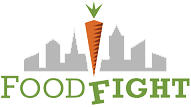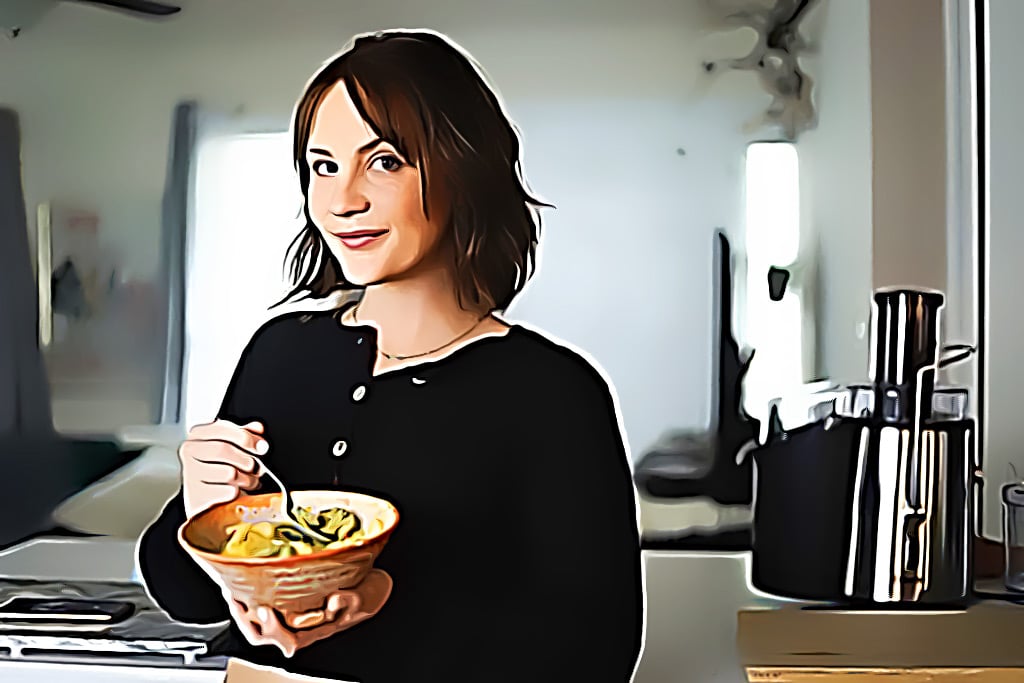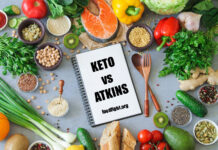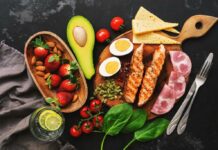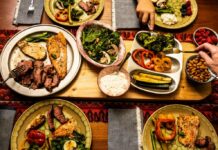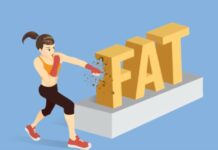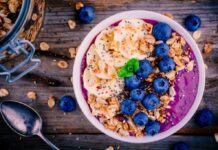Are you ready to kick your carb addiction to the curb? Whether you're looking to slim down or simply reduce the number of processed carbohydrates in your diet, a low-carb eating plan is ideal for you. A keto diet is one of the oldest childhood diets; it's known as a fatty acid ketosis diet.
It's also known as a very low carbohydrate diet, moderate carb diet, or low glycemic index diet. Moreover, it's one of the most effective ways of losing weight quickly and naturally.
This guide will explain everything you need to know about starting a keto diet, whether you want to lose weight or not.
How to Transition to a Keto Diet?
As we mentioned above, keto is a diet that's specialized in reducing carb intake. Thus, the first thing you will have to do is to make sure you don't have any carbs in your diet.
Since most people consume them unwittingly, you will have to be very careful with what you eat and when.
Before we jump into it, let's quickly go over what a keto diet is and how it works to help you transition better.
A keto diet is a low-carb diet that helps you lose weight by getting your body into a state of ketosis. Ketosis is a metabolic state that occurs when you don't give your body carbs, and the liver breaks down fat into ketones.
Ketones are energy molecules your body doesn't usually use, but they can be used as fuel for your brain, so ketosis is great for your brain.
To transition to a keto diet, you'll need to burn more fat than you eat. So, when you follow a keto diet, you won't consume carbs but will be eating healthy fats.
In order to do this, you need to increase your protein intake and decrease your carbohydrate intake. This will help you burn more fat and help you find the right balance between carbs and fats.
If you're a beginner, it can be challenging to figure out the right amount of protein that will do the trick. If you want to get started on a keto diet without any trouble, then just focus on eating enough fat.
You can easily make that happen by increasing your protein intake from 0% to 30%, or even higher, by adding in a lot of fatty foods like fish, eggs, cheese, and butter.
Once you get used to eating high amounts of fat, it can be easy for you to slowly decrease your carb intake until losing weight is no longer an issue for you anymore.
From there, it is all about finding the right balance of carbs and fats to make sure you're not going overboard.
The reason why I suggest eating enough fat is that it will help you burn more fat than you consume. The more fat you eat, the more calories you will burn, and the less you need to eat to ensure your weight stays low.
Healthy fats such as those found in avocados, nuts, olive oil, and fatty fish like salmon, mackerel, and sardines are essential for a healthy body.
Furthermore, they will allow you to feel full for longer, which is great for your weight loss goals.
This means that instead of eating a lot of salad for lunch every day, then once a week when you go out for dinner, you can enjoy a really big steak!
That way, your diet isn't going to be super fussy anymore because your caloric intake is already set up around what your body needs. Instead, your diet will feel much easier and look much better since all your food choices are already set up for you!
Keto Diet – How to Start?
Now that you know how to transition to a keto diet, it's time to follow it. The good news is, it's much easier than you might think.
First, you'll want to pick a diet plan and stick to it for at least two weeks before you change anything.
During this time, you'll be able to assess how easy or hard it will be to follow. Once you've determined that, you can make any adjustments you need to make it easier or harder for you.
Before you start, you'll want to ensure you know what you eat. You'll want to make sure you know what a serving size is and how many servings you have per day.
You'll also want to make sure you know what foods have carbs in them so you don't accidentally eat too many of them.
Once you've gotten a better idea of what you're eating and have a better understanding of what the keto diet is, it's time to start the diet.
Ideally, you'll want to start it when you're at your most active. If you're at work, you can eat your meals when you're not being active, or you can bring your lunch with you and eat your breakfast or lunch at work.
You can also try eating at different times of the day to see if it makes it easier or harder for you to follow a keto diet.
Protein in a Keto Diet
Yes, you read it right. You can actually eat eggs for breakfast, and protein shakes for the rest of the day.
On a keto diet, you can eat eggs for breakfast, and for your protein shake, you can have protein powder mixed with water.
The idea behind this diet is to get us to consume adequate proteins and fats so that our bodies can have the energy they need to stay healthy. Moreover, they will also help us in the process of losing weight.
The best part is that you can also have other protein-rich foods such as meat, fish, cheese, and legumes. Furthermore, they will also help you to build muscle mass and boost your metabolism.
Fat in a Keto Diet
Yes, you can actually eat fat on a keto diet. In fact, you'd be doing yourself a disservice if you didn't.
Fat is a macronutrient that is essential to our health and well-being. In fact, it is one of the most critical components of any diet.
Fat is needed for the production of hormones, cell metabolism, brain function, and for the feeling of satiety. Fat is also helpful for weight loss and for maintaining a healthy heart.
Therefore, you should consume fats in a healthy way on a keto diet.
When you are on a keto diet, you can consume healthy fats such as olive oil, avocados, nuts, and fatty fish. You can also consume butter, ghee, coconut oil, and heavy cream.
But make sure that you don't consume too much of these fats since they are digested more quickly and can lead to a spike in blood sugar levels.
Guidelines for Making it Easier to Follow a Keto Diet
If you're new to the keto diet and are finding it difficult to follow, don't worry! You can make it a bit easier for yourself by making some small changes.
1. Don't eat too fast
Eating too fast is the number one mistake people make when trying to lose weight. Eating too fast will lead to overeating, making it much harder to lose weight.
2. Don't snack between meals
Eating small snacks between meals will only make you overeat in between meals, which is a big no-no on the keto diet.
3. Don't drink too much water
Again, water is important, but only during the initial phase of the keto diet. After you have lost a lot of weight, you don't need to drink as much water anymore.
In addition, don't do anything that is not allowed by the keto diet. This includes vitamins, minerals, prescription drugs, alcohol, caffeine, and illegal drugs.
4. Don't eat at the same time every day
Eating the same things at the same time every day will make it much harder for you to follow a keto diet. You should try to mix up your meals and eat a little bit from different categories.
5. Don't stress over it
People often worry about following a diet like this. However, you shouldn't stress about it. You should simply make minor adjustments, and you will be fine.
Is a Keto Diet Safe?
Yes, a keto diet is one of the healthiest diets you can follow. It has been proven to help you lose weight and increase your metabolism while also helping to prevent disease.
As mentioned above, a keto diet is low-carbohydrate, moderate protein, and high-fat. This means it will help you lose weight and improve your health.
Furthermore, it's also a very safe diet to follow. This is because it relies heavily on fats, which are one of the most nutritious and safe foods to consume.
As we mentioned above, you can eat fat on a keto diet, which means that you don't have to worry about getting too many dangerous nutrients.
How to Stay Healthy on a Keto Diet
Yes, a keto diet is very healthy, but it's also very restrictive. This means you will have to be extremely careful if you want to stay healthy.
To stay healthy on a keto diet, it is recommended that you consume a significant amount of vegetables (at least five servings per day), fresh fruit (at least two servings per day), and lean meats (at least two servings per day).
You should also make sure you drink plenty of water because your body needs to stay hydrated while on a keto diet.
In addition to these recommendations, you should also try to get some exercise on a regular basis.
This will help burn off any extra calories you eat while you are burning off the calories you have consumed through your diet.
Conclusion
In conclusion, keto dieting has become increasingly popular over the past couple of years, and for a good reason. There are plenty of studies showing that following a low-carb diet can help you lose weight faster than traditional diets, and it's easy to follow too.
All you really need to know is that you want to cut carbs from your daily intake. This means cutting out processed foods like bread, cereals, pasta, rice, potatoes, and anything made with flour. Instead, focus on eating lots of vegetables, lean protein sources like chicken, fish, eggs, and beans, and healthy fats like avocado, olive oil, and nuts.
The rest of the process is pretty straightforward: you track your food intake using a smartphone app and adjust your macros accordingly. Once you reach your goal weight, you can slowly reintroduce carbs into your diet but keep them under control.
